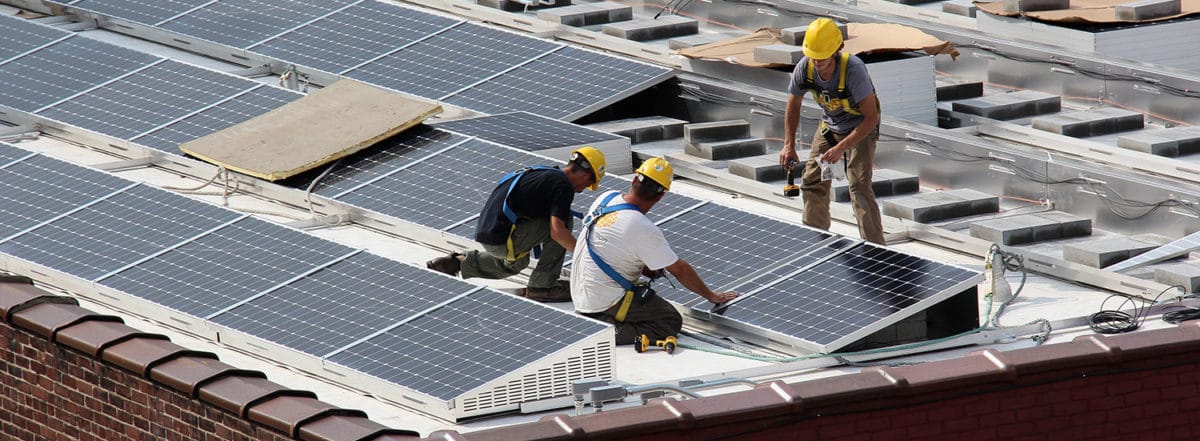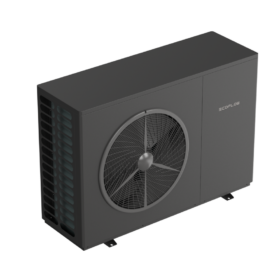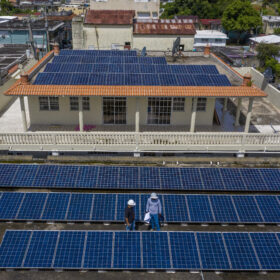 pv magazine: Can you give a brief description of what the Opportunity Zone tax incentive is and why it’s such a great opportunity for solar development?
pv magazine: Can you give a brief description of what the Opportunity Zone tax incentive is and why it’s such a great opportunity for solar development?
Jon Bonanno: It is a new tax incentives that is very broad in terms of its place. So there are over 8,700 regions or zones where this tax can be applied and the clean energy project or the corporate that’s offering the equity has to be physically located in an Opportunity Zone. And the nice part about the incentive is that it is a super transactionally-clean instrument, so that you are not encumbering the project company or the corporate equity offerer with a lot of extra issues and backflips to be compliant – like one might have experienced with New Market Tax Credits (NMTC). It’s bigger in size and easier to use than the Investment Tax Credit (ITC) and NMTC.
pv magazine: Now also it specifically applies to capital gains tax not income taxes like the ITC. Why is this so important in terms of the potential utility to investors and developers?
Bonanno: The ITC is an income tax efficiency tool. The Opportunity Zone tax incentive is for any individual, partnership, corporate or foreign party wanting to be efficient with their capital gains. According to our partners DLA Piper and KPMG, there are over $6 trillion in capital gains in the U.S. economy and an estimated $300 billion will move into Opportunity Zones.
At the moment, we know many enormous capital gains investors seeking quality clean energy projects. There is no lack of capital. There is a lack of good clean energy projects. The tax incentive itself creates project value. We see the most successful partnerships between capital and developers having honest discussions around sharing that value so that programs and repetition can happen.
So what we need is quality developers of solar, energy storage, hybrid systems, EV charging infrastructure and EV fleet leasing companies to bring their projects to www.MyOZFund.org and check that the addresses at which the project will be developed is in an Opportunity Zone. Once a project has been confirmed in the Zone, the capital source or developer can request to create a Qualified Opportunity Zone Fund (QOF) for them to use and benefit from. We come at this from a non-profit perspective so myozfund.org is a nonprofit platform that we use for awareness, education and facilitation of compliant QOFs, on behalf of the requesting party.
pv magazine: So to step back for a second, can you talk for a little bit about how the Opportunity Zones came about and the problem that this program is seeking to solve?
Bonanno: The Opportunity Zone Act was part of the Tax Cut and Jobs Act that was signed into law in December of 2017. On the site, we have a white paper, called Clean Energy Investing In Opportunity Zones. The history is clearly laid out in that paper. The intent of this new tax incentive is for capital to be invested in low income areas, create value in those communities, create jobs and stay for a long period of time. We saw this as a powerful financial tool to forge an equitable transition to a non-fossil economy. The authors and supporters of this tax incentive identified that there is a growing economic gap in the United States, which this attempting to remedy.
The bill became law in 2017 December. When we first read the legislation, we saw this as an ideal tool to use for our dual purpose mission of a clean energy transition with equity or as we say “100% for the 100!”
pv magazine: So to get to Puerto Rico: Why is this incentive particularly effective in Puerto Rico? What problems does it solve there?
Bonanno: Yes, nearly all of Puerto Rico is an Opportunity Zone. So any corporate PPA projects with solar, wind, energy storage, EV charging, etc. should utilize this structure to maximize the value. 60% of Puerto Rico’s load is from the industrial sector and many multinationals are doing manufacturing and pharmaceuticals. In a place like Puerto Rico, which, for many, has a perceived financial risk, customers like GE and Pfizer are ideal clean energy off-takers and totally bankable.
As we like to say, the underlying project has to merit investors’ attention before one considers adding Opportunity Zone finance. That said, I fully expect to see some creative solutions around the emerging CO-OP as the off-taker trend. It is still early, but absolutely something to watch and it will be high impact to these communities wanting to go 100% renewables and gain their energy independence.
Can Opportunity Zone finance help in Puerto Rico? Yes. Developers should review their project pipeline, confirm OZ on the address and present them to us when they are nearly Notice to Proceed but before COD. We can help with the QOF and our network of capital sources.
But I want to reiterate that the opportunity zones are all over the United States. They’re in New York, Massachusetts, Minnesota, California, Florida, Texas, Pennsylvania. So the opportunity zones are everywhere.
pv magazine: You started to allude to this but can you give a more full explanation of the work that New Energy Nexus is doing to spread the word about Opportunity Zones, and what its role is in supporting developers and investors?
Bonanno: So we are a 501(c)3, sixteen years of operational excellence, impeccable brand, a very trusted party. So what we’ve decided to do with Opportunity Zones is we are making all stakeholders aware that the Opportunity Zone tax incentive is applicable to clean energy projects and clean energy corporate equity. Our mission is first and foremost awareness. The second thing we’re doing is we’re educating, per the myozfund.org site, the white papers we’ve produced, making simplified videos and more. We are educating all parties on what it is, how it works, the benefits and the complexities of compliant use.
The final thing we are creating a compliant, Qualified Opportunity Zone Fund structure for the requesting party and doing the ongoing QOF compliance. And so a developer can come to us, get educated and form a QOF for their Opportunity Zone fleet EV charging station or community solar system. Think of our not-for-profit service as LegalZoom for clean energy QOFs, with ongoing compliance for the QOF with the federal treasury.
pv magazine: So why is it for developers to act quickly to take advantage of this program?
Bonanno: The tax incentive very time-sensitive and decays over time. So by the end of 2019 there is a deadline. And if the capital sources do not get their money deployed into the fund by the end of 2019, they forfeit the possibility to capture a 5% basis adjustment. If they deploy their money after 2019 and before 2022 they only have the ability to capture 10% of the basis adjustment.
So that’s why it’s very important that the capital moves into these funds the funds deploy the money into the clean energy projects, A full 15% of basis adjustment on your capital gains is a significant value and that is why so many capital sources are coming to us to find high quality developers with solid clean energy projects. That said, even if capital is deployed after 2019 there’s a 10% basis adjustment potential. So it’s not it’s not like you’re falling off a cliff it’s just ratcheting down. So, the most possible benefit can be gained by deploying the money early.
Interview conducted by Christian Roselund
This content is protected by copyright and may not be reused. If you want to cooperate with us and would like to reuse some of our content, please contact: editors@pv-magazine.com.








By submitting this form you agree to pv magazine using your data for the purposes of publishing your comment.
Your personal data will only be disclosed or otherwise transmitted to third parties for the purposes of spam filtering or if this is necessary for technical maintenance of the website. Any other transfer to third parties will not take place unless this is justified on the basis of applicable data protection regulations or if pv magazine is legally obliged to do so.
You may revoke this consent at any time with effect for the future, in which case your personal data will be deleted immediately. Otherwise, your data will be deleted if pv magazine has processed your request or the purpose of data storage is fulfilled.
Further information on data privacy can be found in our Data Protection Policy.